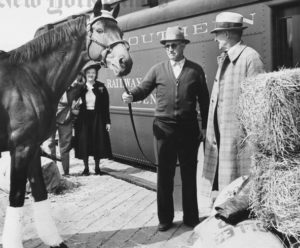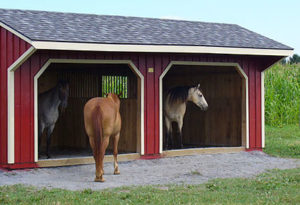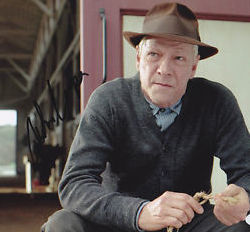Tom Smith knew what happened off the track was crucial to victories on the track. Diet and horse keeping practices were key to the champion he developed out of the fussy, difficult Seabiscuit. Read about Seabiscuit: An American Legend and other favorite horse books.
Nervous behaviors and stereotypies (non-functioning, repetitive movements) are physical manifestations of an ill-kept horse. They are diseases of domestication that make for stressed, underperforming and downright unhappy horses.
We can prevent the onset of issues and possibly undo these problems if we take away the artificial components of our care and maintain more natural elements.
Back in the 1930’s, Smith knew that if he could make Seabiscuit happier and more relaxed, he could make him a winner, too. The trainer didn’t just focus on split times and jockey assignments. He scrutinized every aspect of Seabiscuit’s life from handling, to companionship, to feed and living space.
Or, as Dr. Steve Peters and Martin Black write in Evidence-Based Horsemanship:
“Any changes you introduce away from a natural setting will have an impact. You may not notice it, but varying levels of domestication will indeed impact the horse on a physiological and psychological level.”
Even within the constraints of the thoroughbred racing world, Smith worked this altogether simple magic. Over time, Seabiscuit relaxed, shed his stress and correspondingly became one of the most celebrated horses of all time.
Stereotypies are behaviors like cribbing, weaving, pacing and head bobbing. Researchers have found these movements linked to increased cortisol levels as
well as reduced levels of serotonin (respectively, these are chemicals associated with stress and mood stability). They most often develop when you take away horses’ ability to move, graze normally, and socialize.
Think your horses are OK in stalls where they can see each other?
Think again.
Writes Peters, “simply housing horses together in separate stalls does not satisfy their need for sensory communication.”
In other words, offer your horses the option of shelter, but don’t make confinement mandatory.
Even when he traveled cross-country by train, Smith gave Seabiscuit a jumbo stall.
The trainer also offered scores of companion animals to the finicky horse. When he introduced a goat, the horse famously grabbed her by the neck with his teeth and tossed her over the stall wall into the barn aisle. Finally, Smith tried a retired Montana cow pony named Pumpkin, a “general calmer-downer” writes Laura Hillenbrand in her book, Seabiscuit, an American Legend. “They conversed and developed a fast friendship… and lived and worked the rest of their lives together.”
Consider diet:
Horses’ stomachs are small, about the size of a football. They are designed to take in small amounts of food over long periods of time (ie, grazing much of the day). But if you impose human-like meal times, you’ll run into problems – and not just digestive issues like colic. Research shows horses can develop stereotypies when forced into strict routines, especially around food. In the horse world, there’s no such thing as mealtime.
Seabiscuit got lots of free-choice hay and some oats. Had it been an option, he might have considered Lucerne Farms forage. Read about it here.
The iconic stallion wasn’t treated like a champion in our human interpretation of the word, with isolation and quartered privilege. He was treated like a horse. Behind all the pomp and circumstance, that’s how Smith nurtured him from troublesome mediocrity to the stuff of legend.


